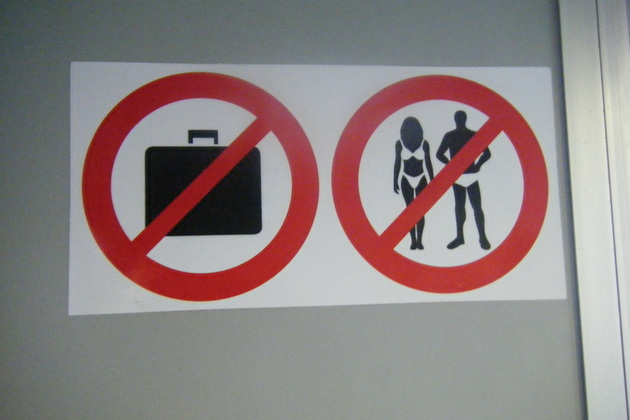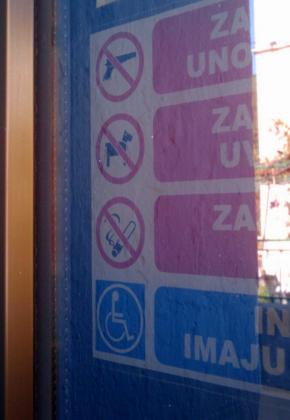Christian Bazant Hegemark in his Studio
It took a wedding to lure us back to vienna after eight years of absence. Christian’s hospitality was overwhelming and the fun it is to take his portrait didn’t change either.
It took a wedding to lure us back to vienna after eight years of absence. Christian’s hospitality was overwhelming and the fun it is to take his portrait didn’t change either.
It has been a while since I last rubbed elbows with Goethe, Schiller and the likes in this neat little town — close to a quarter of a century to be precise. In total everybody in the family loved the experience, the only place we found somewhat disappointing was the Bauhaus-Museum.
In a possible world I would live in the old family farm by the forest. I’d have a wood fired oven, plenty of vegetables and fruit from the garden and more space in- and outside the house than I could possibly fill. I would eat my home baked bread for breakfast in the old chicken yard while enjoying the most stunning view over the Weser-valley.
I’d also have had an idea why I would and could live in the sticks, I’d have had another idea that would fill ex-barn and ex-stable with something sensible – preferably something sensible and income-generating so it would provide me with yet another idea on how to pay for maintenance of the gigantic roof.
In the real world the old family farm just got sold.
This summer I noticed how the private environment in which the colours of a national flag are flown is usually unmatched by the pride it is meant to display. Hence, I started taking pictures of citizens who nail their colours to the flag post.

For several years I have been taking pictures of a dying breed: telephone boxes.

While some of the boxes have been upgraded to non-box shapes with huge screens and WiFi, many are in a sad state and some even stripped of their primary function. The variety of shapes and types of boxes and telephones even in a single country is astonishing and even the gutted ones continue to serve as advertising space, rain shelters, smoking rooms and toilets for various kinds of animals.
Old masters by new ones: in September 2014, artist Donovan Spaanstra recreated Willem van de Velde’s Schepen voor de Kust in Amsterdam Noord’s Ghostface Killahstraat.
With roaring, rumbling and growling yesterday’s thunderstorm evidently scared away the last fragile remains of summer. It left behind a few white clouds over the Gerhard-Hanappi-Stadium which as well will soon cease to be.
Second time Hochschwab, second time no summit. This time better pictures, though.
In late May, I started in Präbichl and, through considerable amounts of snow, made my way up to the Sonnschienhütte where I had the dorm all to myself. Unfortunately, I had my eyes at the wrong place at the wrong time and so I fell and injured my finger. Thus, instead of summiting the Hochschwab the next day, I went down to Tragöß (via Grüner See) – and straight into hospital where the trip ended with an »Eintrittsaufforderung«. Luckily nothing serious came to light in Koje 1, but damn you Hochschwab, next time I do want a summit. Please.In January I went to Hanover. While my wife attended a conference, I took care of our new born daughter and walked around quite a bit, morning to night. I grew up in the area and always thought of Hanover as by far the ugliest potato in the bag of post-war architecture – Max Goldt once claimed that »every German city has a bit of Hanover«. The city suffered a lot from bombings and after the war people quickly rebuilt it, aesthetics clearly towards the end on the list of their priorities.
Yet, this time I was surprised to discover some really pretty areas, both pre- and post-war. Here are a couple of b/w shots of pretty Hanover by night:
Last Wednesday the »Long Shadow of Chernobyl« exhibition opened at the Natural History Museum in Vienna. During several visits to Chernobyl, National Geographic photographer Gerd Ludwig documented the people, the remains of the plant and life in the exclusion zone (see a short video here and more content here).
Thanks to the generosity of NHM’s communication department, I was lucky enough to receive an invitation for the opening function/book presentation last Tuesday. Apart from recommending to go and see the exhibition (until September) I took away some food for thought from the opening talks.
Christian Köberl, the museum’s director, explained how the Natural History Museum – an institution that is widely associated with stuffed animals and a vast collection of rocks – came to host an exhibition covering a problem that is clearly man-made. He linked it to two other exhibitions currently on display: Trading in Death – the Final Mass Extinction? has the commercial interest and its impact on nature as a common denominator. Experiment Life – Gabonionta overlaps as it shows the oldest complex life forms known to man, which share the time and the place (Gabon, 2.1 billion years ago) of a highly above average activity in natural nuclear chain reactions similar to the counterparts in man-made reactors nowadays. Whether there is a causal link to the advent of the first complex, colonial organisms is unclear but interesting.
The museum can shape the context and thus shape perception. By putting three different, seemingly unrelated temporal exhibitions on at the same time, a very constructive overlapping is created – interferences come into being simply through putting three seemingly unrelated things next to each other.
Lois Lammerhuber (of the book’s publisher Edition Lammerhuber) recounted the media reception. Despite the lack of a Chernobyl jubilee, all the important news outlets had already covered the publication and exhibition. When he asked German state TV, who filmed for two hours in the exhibition, why they were doing it, they answered: »Weil ein Buch erscheint« (»because a book is being published«, where the German »erscheinen« can both refer to an »appearance« as well as an »epiphany«). Lammerhuber was visibly impressed by how he, in letting a book appear, can force something onto the agenda of a world that would otherwise not have taken notice at that point in time.
As the two preconditions he identified Ludwig’s willingness to commit to such a long term project and his capability to make something visible.
Gerd Ludwig gave a few insights into the way he works. Even though the subject of his images is suffering and destruction, the are aesthetically pleasing. Aesthetics to him is the grammar of photography.
He views the fact that he does not have to work under a tight time constraint as his biggest privilege because it means that he can talk first and then take the pictures. The trust he establishes through the conversations greatly helps reduce the momentary amplification of suffering he inevitably causes by taking a picture.
He finished by telling a story from Sicily: one night an enormous number of starfish were washed ashore. In the morning, when the sun rose, they started to dry out and die. The children of the village noticed and started carrying them back to the water. An older man from the village stood and watched and said: »you can’t save them all, your enterprise is futile – the little you can do doesn’t make a difference«. One child, holding up a single starfish, replied: »And yet for this one, it does make a difference«. Ludwig wants to be this child always.
Finally, the section chief Michael P. Franz closed the circle Christian Koeberl established by opening the exhibition with a Gottfried Boehm quote: an image, he says, pre-formulates the access to our world.
A few days ago I finally made it into the Postsparkasse (Otto Wagner finished the Savings Bank in 1906). The main hall has both a glass floor and a glass ceiling and the light really is breathtaking.
I spent New Year’s Eve with magician, architect and fellow photographer Sven Wuttej. Going through his images from the last day at Wien Südbahnhof reminded me of the pictures I took of the monumental old landmark when I still lived right across the road from the train station. Somehow I quite liked the architecture, and was hence rather sad to see it go. So here are a couple of images from the transition of the hood: »Wien Süd« to »Quartier Belvedere«.
The first few pictures, where the train station (if already partly demolished) is still busy are from August 2009. The ones of the gutted building I took in February 2010 and the last two, where nothing remains of the old glory, are from September 2010 (you can see the very last one with just a flat stretch of sand where the station once was in full size).To escape the heat, we recently took refuge to the old family cabin in the German forests. We started by a brief stay in Munich and concluded with a huge cake in Ratisbon.
Been travelling: »No briefcases, no swimming, no smoking, no dogs, no firearms – no problem«



With more than a decade of experience, I strengthen the visual identity of my clients through industrial, academic, and corporate photography.
I also headed communications departments in both the corporate and the academic world and this background enables me to get you the visuals you need – every time!
What I enjoy about product photography is that through spending time with an object that otherwise gets overlooked as a mere utility, beauty can be found in unexpected places.
Making the extraordinary within the ordinary visible for others always is a very exciting process.
In the words of Arnold Newman, Portrait photography is 10% inspiration and 90% moving furniture.
It never seizes to amaze me how, by moving some furniture around and thus creating a carefully designed context for the subject, photography can condense the many facets of a personality into a still image.
Copyright © 2007-2025 Jan Söhlke. All Rights Reserved.